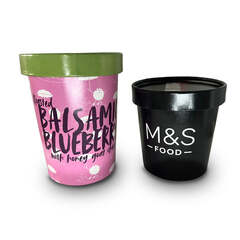The Rise of Biodegradable Food Packaging
In recent years, the global food industry has faced a significant challenge the accumulation of plastic waste. With an increasing awareness of environmental issues, consumers and businesses alike are seeking sustainable alternatives to traditional packaging. Biodegradable food packaging has emerged as a viable solution, offering an eco-friendly option that minimizes environmental impact while ensuring food safety and freshness.
Biodegradable food packaging refers to materials that can decompose naturally in the environment through the action of microorganisms. These materials typically break down into organic matter, reducing pollution and the dependence on fossil fuels, unlike conventional plastic which can take hundreds of years to decompose. Biodegradable options include materials such as plant-based plastics, paper, and compostable substances made from starch, cellulose, and other renewable resources.
One of the key drivers behind the shift to biodegradable packaging is consumer demand. Research shows that a significant number of consumers prefer products that are environmentally friendly. This trend is particularly strong among younger generations, who are more willing to pay a premium for sustainable products. As a result, many food brands and retailers are opting for biodegradable packaging to attract eco-conscious customers and bolster their corporate social responsibility (CSR) initiatives.
In addition to consumer pressure, regulations are also influencing the adoption of biodegradable packaging. Governments around the world are implementing strict regulations to curb single-use plastics and promote sustainability. For example, several countries have enacted bans on plastic bags and straws, prompting businesses to explore alternative packaging solutions. The European Union has announced plans to phase out single-use plastics entirely, which has encouraged food manufacturers to adopt biodegradable materials.
biodegradable food packaging

Biodegradable food packaging is not only beneficial for the environment but also for food safety. Many biodegradable materials are designed to protect food from contamination and extend shelf life, similar to conventional plastics. For instance, biodegradable films can provide a barrier against moisture, oxygen, and light, all of which are crucial for maintaining food quality. This functionality allows businesses to maintain food safety standards while minimizing their environmental footprint.
Despite the many advantages, biodegradable food packaging is not without its challenges. One significant hurdle is the misconception that all biodegradable materials will break down quickly in any environment. In reality, the decomposition of biodegradable packaging often requires specific conditions, such as industrial composting facilities that maintain the right temperature and humidity. Without these conditions, some biodegradable materials may not break down effectively, leading to environmental issues rather than solving them.
Moreover, there can be a higher cost associated with biodegradable materials compared to traditional plastics. For many companies, especially small businesses, the initial investment in biodegradable packaging can be daunting. However, as technology advances and economies of scale come into play, the costs are expected to decrease, making biodegradable packaging more accessible to a wider range of businesses.
Innovations in biodegradable packaging are rapidly emerging, with researchers and companies exploring new materials and technologies. For example, some packaging solutions are being developed from seaweed, mushrooms, and other natural materials that offer both biodegradability and functionality. Additionally, advancements in manufacturing processes are improving the performance and cost-effectiveness of biodegradable options, making them more competitive with conventional plastics.
In conclusion, biodegradable food packaging represents a promising solution to the growing problem of plastic waste in the food industry. By addressing consumer demand, regulatory pressures, and environmental concerns, biodegradable materials can play a critical role in creating a more sustainable future. While challenges remain, ongoing innovations and increasing awareness are paving the way for a transition towards more eco-friendly packaging solutions. As stakeholders across the food supply chain continue to prioritize sustainability, the adoption of biodegradable food packaging is likely to become more widespread, resulting in a cleaner, healthier planet for generations to come.



